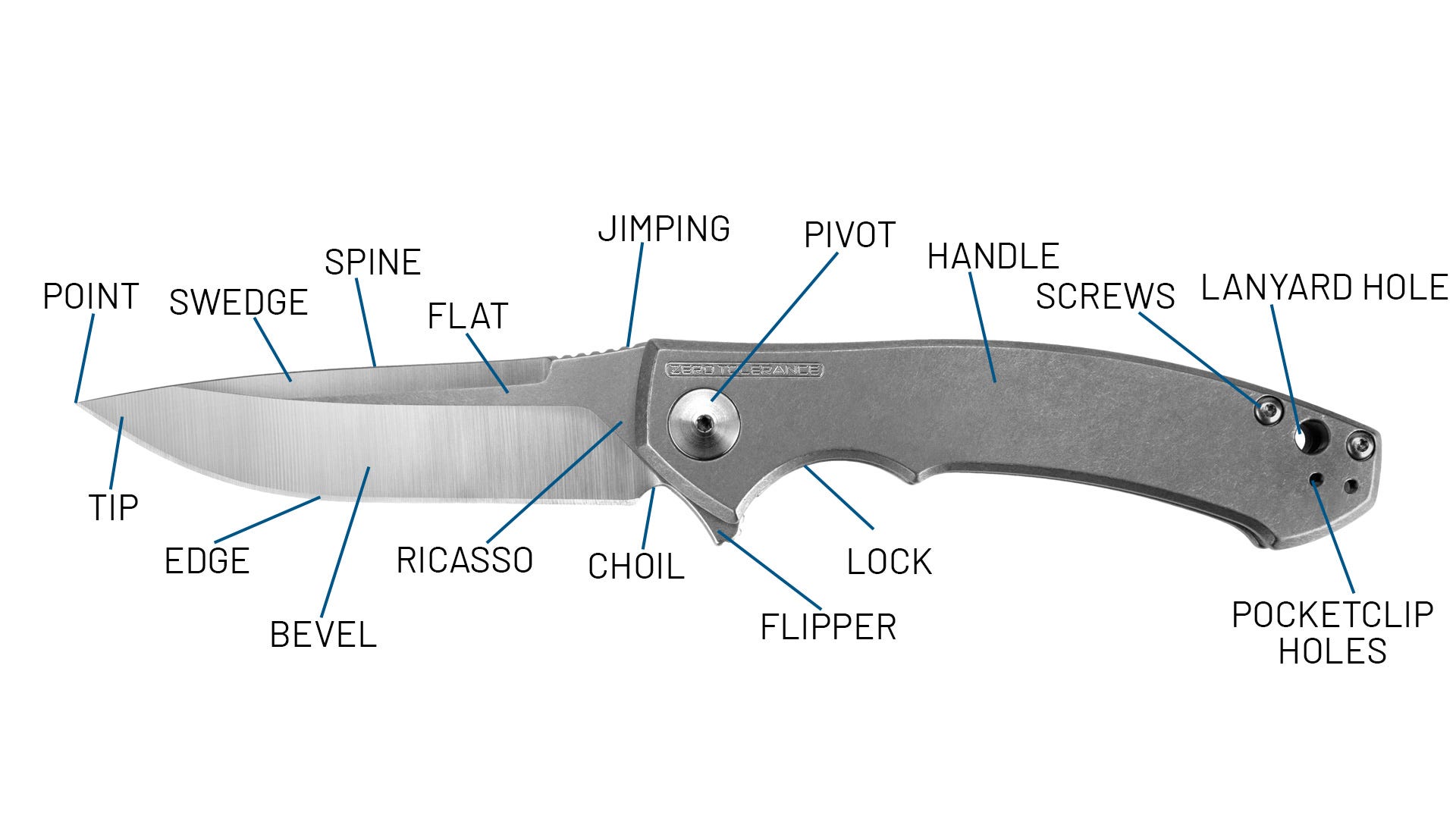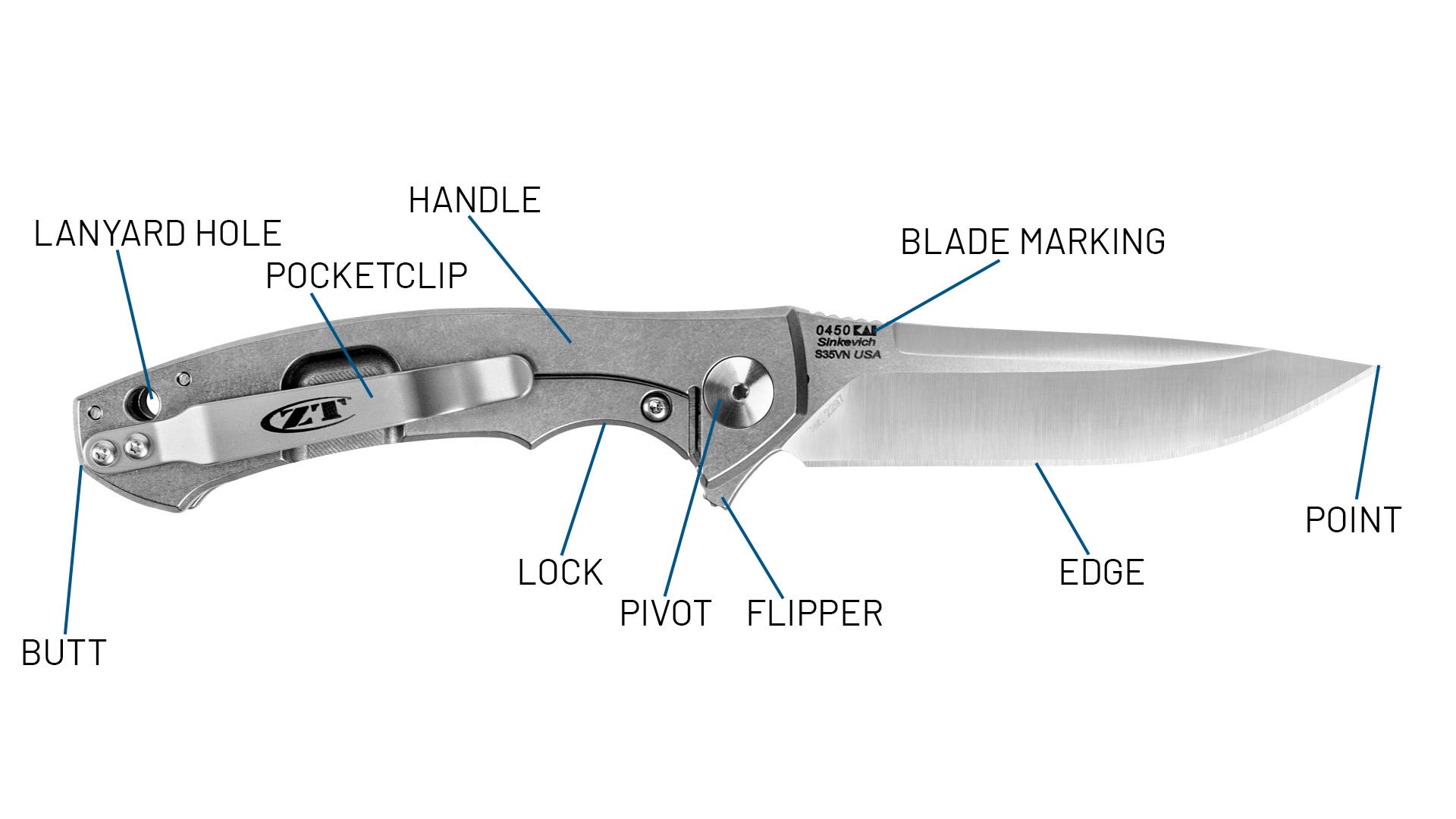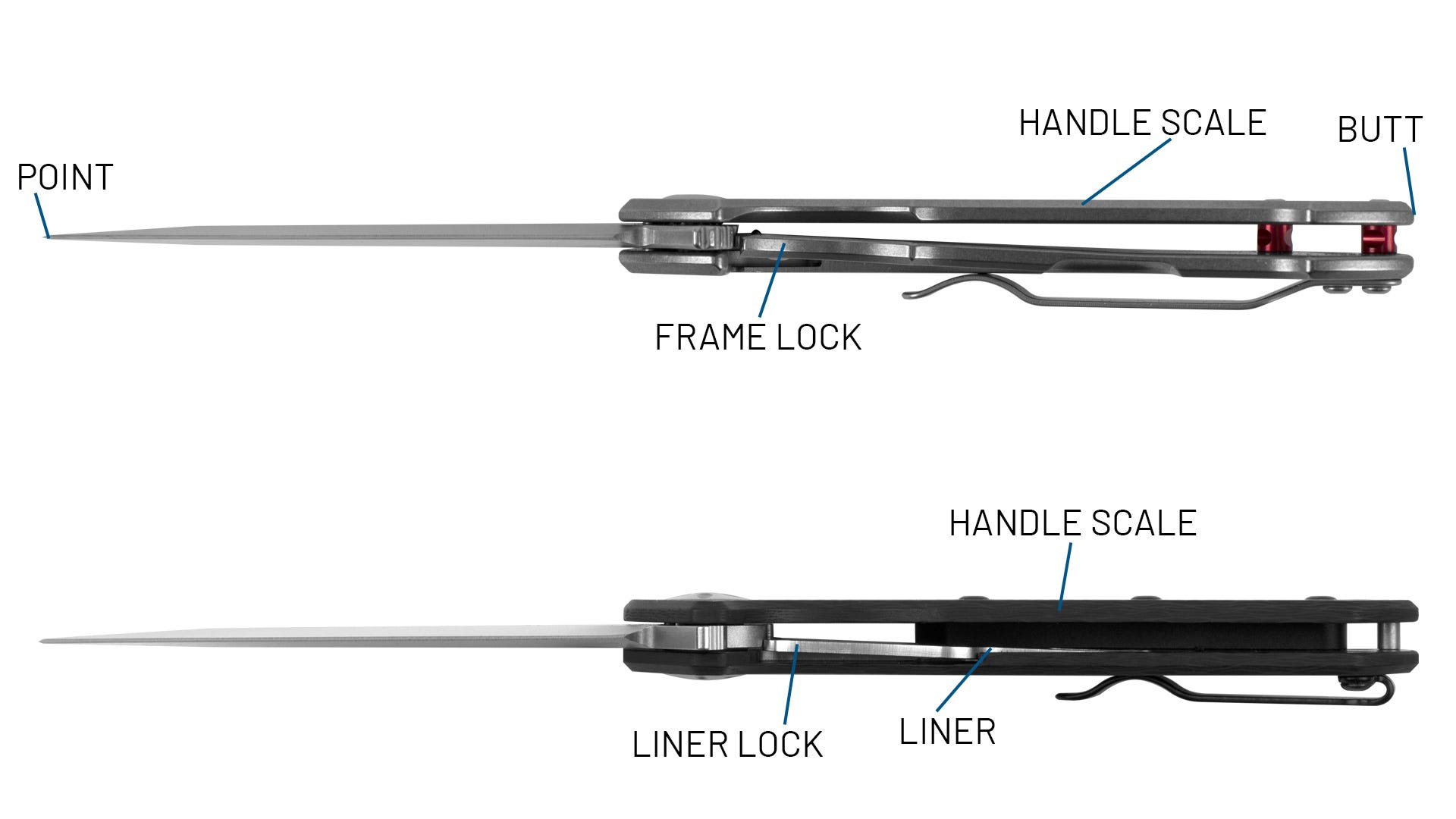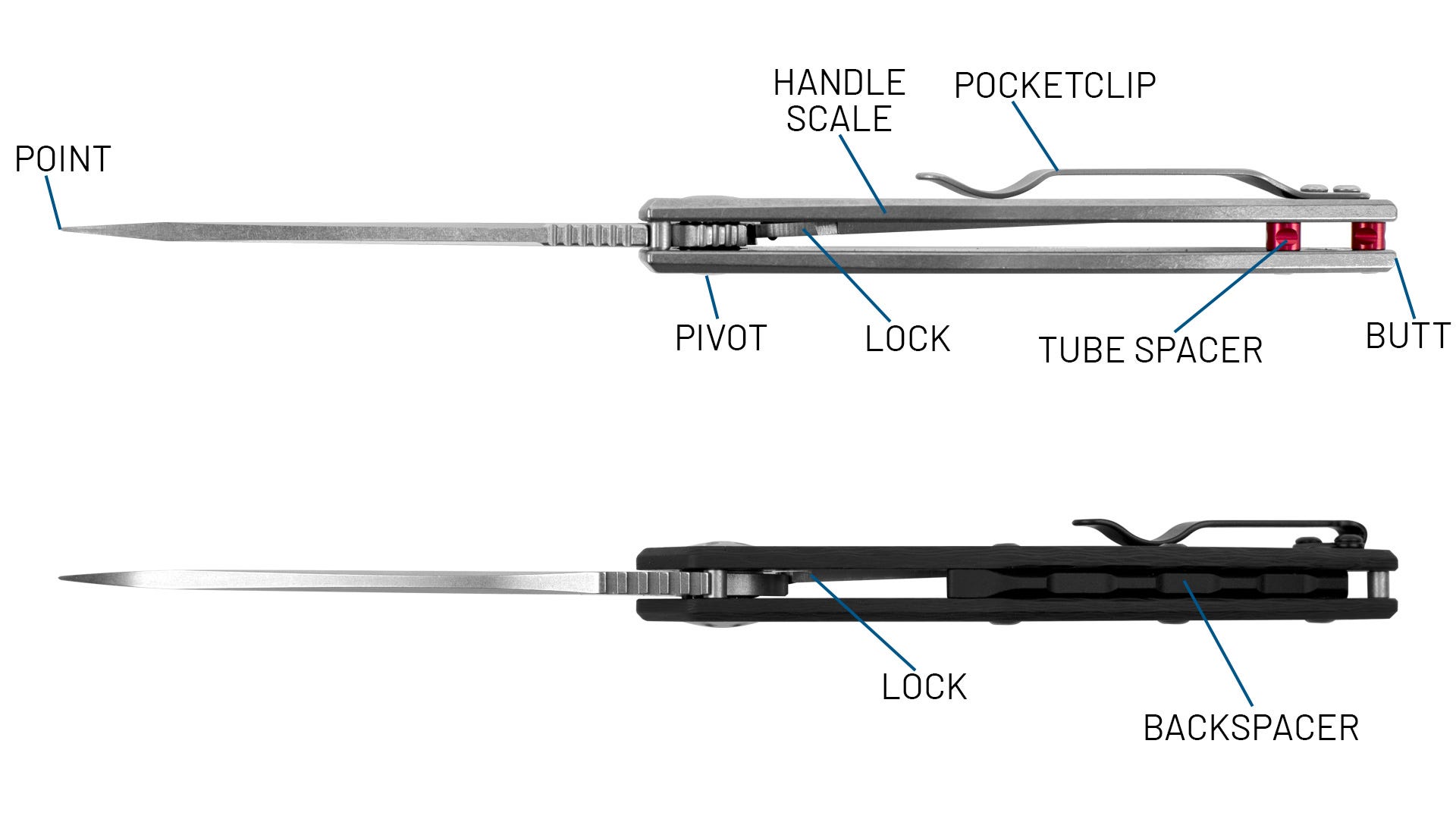Knife Anatomy
It’s easier to talk about your obsession if you know the proper terminology. Here’s a quick diagram to help you get to know the parts of your ZT.
Front view

Front View Definitions
Point: The edge and the spine meet at the point of the knife, which is often used for piercing.
Tip: The front part of the blade that includes the tip. The tip is used for fine detail work.
Swedge: This is a tapered or beveled false edge near the spine of the blade. It reduces thickness to improve piercing.
Edge: The sharpened part of the blade that is used to slice and pierce through cutting tasks.
Bevel: A bevel is a blade grind that forms the blade edge.
Spine:This is the unsharpened top edge of the blade, opposite of the cutting edge.
Flat: The face of the knife without any grinds. It often includes the Kershaw logo and other lasered information about the knife.
Ricasso: The unsharpened portion of the blade between the grinds and handle. It thickens as it gets closer to the handle.
Choil: An indented, curved notch behind the blade edge. It allows users to properly sharpen all the way to the end of the edge.
Jimping: A textured part of the handle that offers enhanced grip and ergonomics.
Flipper: A flipper is an opening mechanism. Users apply pressure to the flipper with their index finger to push the blade into the open position. .
Pivot: The part of a folding knife where the blade attaches to the handle.
Lock: Keeps the blade secure in the open position. Kershaw uses several kinds of locks in its folding knives, including the liner lock and frame lock.
Handle: Users grip the handle to hold the knife and comfortably use the blade.
Screws: Secures the handle scales to the knife.
Lanyard hole: Allows users to attach a lanyard to the knife.
Pocket clip holes: Where the pocket clip is attached. Additional pocket clip holes allow users to swap the clip to alternative positions.
Back view

Back View Definitions
Butt: The back end of the handle that may contain a lanyard hole or pocket clip screws.
Lanyard hole: Allows users to attach a lanyard to the knife.
Pocket clip: Allows users to attach the folded knife inside their pant pocket and carry it on-the-go.
Handle: Users grip the handle to hold the knife and comfortably use the blade.
Lock: Keeps the blade secure in the open position. Kershaw uses several kinds of locks in its folding knives, including the liner lock and frame lock.
Pivot: The part of a folding knife where the blade attaches to the handle.
Flipper: A flipper is an opening mechanism. Users apply pressure to the flipper with their index finger to push the blade into the open position. .
Blade marking: Lasered etchings that provide information about the knife, including the model number.
Edge: The sharpened part of the blade that is used to slice and pierce through cutting tasks.
Point: The edge and the spine meet at the point of the knife, which is often used for piercing.
Bottom View



Bottom View Definitions
Point: The edge and the spine meet at the point of the knife, which is often used for piercing.
Frame lock: In a frame lock knife, the knife handle—its “frame”—consists of two plates of material on either side of the blade. When the knife is opened, the metal side of the frame, the lockbar, butts up against the backend of the blade (the tang) and prevents the blade from closing.
Liner lock: In knives with locking liners, the handle consists of two metal plates (the “liner”) on either side of the blade. The locking liner secures the blade in the open position.
Liner: Flat pieces of metal inside the handle. Liners provide structure for the handle and pivot, and in liner lock knives, work as the blade lock.
Handle scale: Covers the interior of the knife and creates a surface that users can grip.
Butt: The back end of the handle that may contain a lanyard hole or pocket clip screws.
Top View

Top View Definitions
Point: The edge and the spine meet at the point of the knife, which is often used for piercing.
Pivot: The part of a folding knife where the blade attaches to the handle.
Lock: Keeps the blade secure in the open position. Kershaw uses several kinds of locks in its folding knives, including the liner lock and frame lock.
Handle scale: Covers the interior of the knife and creates a surface that users can grip.
Pocket clip: Allows users to attach the folded knife inside their pant pocket and carry it on-the-go.
Tube spacer: Often located within the spine of the knife. They secure the two handle scales together.
Backspacer: The enclosed area on the spine of the knife handle. It offers rigid construction and sometimes extra jimping.
Butt: The back end of the handle that may contain a lanyard hole or pocket clip screws.

